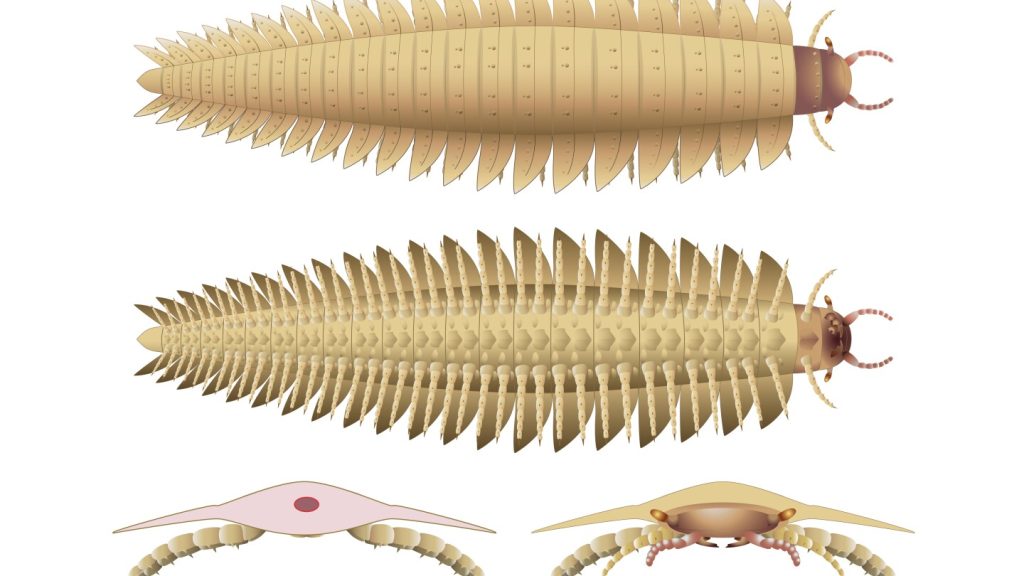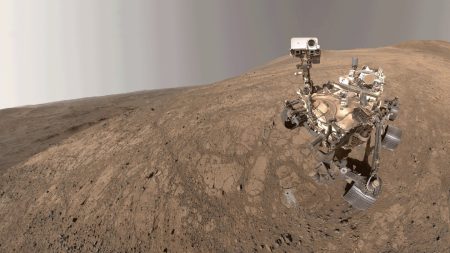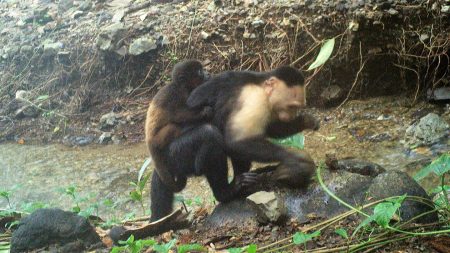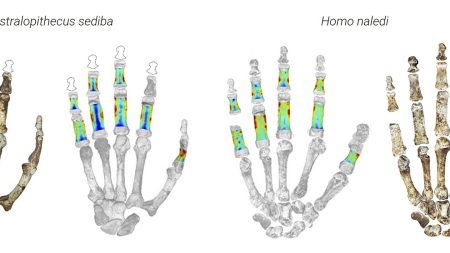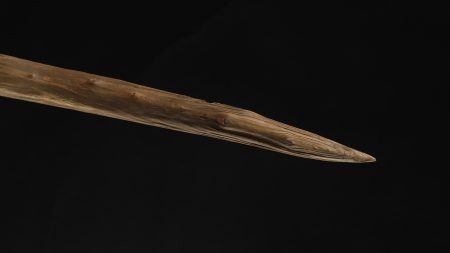Scientists have recently made fascinating discoveries about one of the largest known arthropods, the Arthropleura, which lived around 300 million years ago. This extinct insect-like creature is remarkable not only for its immense size, growing up to 9 feet long and weighing over 100 pounds, but also for shedding light on its previously unknown head structure. Most fossils found in the past consisted merely of shell remnants from when these creatures molted, making it difficult to reconstruct how they appeared in life. However, new research utilizing well-preserved juvenile fossils has provided insights into the morphology of this ancient giant.
The study published in Science Advances reveals that the head of Arthropleura was distinctly shaped, featuring a round bulbar structure adorned with two bell-shaped antennae, protruding eyes resembling those of crabs, and a smaller mouth adapted for grinding plant material. This unique combination of features included millipede-like body structure alongside centipede-like head characteristics. According to Mickael Lheritier, a co-author of the research and a paleobiologist based in Lyon, France, this unexpected blend of traits provides a clearer picture of Arthropleura’s biology and potentially its behavior.
While the debate continues as to whether Arthropleura was the largest bug to roam the Earth, it remains a strong contender, alongside other giants like the extinct sea scorpion. Throughout the years, researchers from Europe and North America have amassed a wealth of fossil fragments and footprints, increasing our understanding of these ancient creatures since the late 19th century. The challenge in piecing together their anatomy has often stemmed from the incomplete nature of the discovered specimens, particularly the absence of head fossils.
In order to overcome this puzzle, the research team employed advanced CT scanning technology. This method enabled them to evaluate intact juvenile fossils embedded in rocks, specifically those dating back to the 1980s found in a French coal field. Utilizing CT scans, the team could examine the hidden details of the fossils without risking damage by physically extracting them from the rock. This innovation marks a significant step forward in paleobiological research, allowing scientists to study delicate features that were previously obscured.
Though the juvenile fossil specimens only measured around 2 inches, suggesting they may not have reached the tremendous sizes of their adult counterparts, they nonetheless provide critical insights into the species. Researchers believe that the structural characteristics observed in these juveniles offer valid clues regarding the morphology of their larger relatives. The discovery has ignited greater interest in ongoing studies of Arthropleura and related extinct arthropods, enriching our understanding of their evolutionary history over millions of years.
This groundbreaking study not only reveals the physical appearance of the Arthropleura but also underscores the importance of modern technology in paleontological research. Techniques like CT scanning allow scientists to unveil the mysteries of ancient life without damaging valuable specimens. As this field continues to progress, the hope is that further discoveries can be made, enhancing our comprehension of both the past ecosystems they inhabited and the evolutionary pathways that led to the remarkable diversity of life forms we see today.




